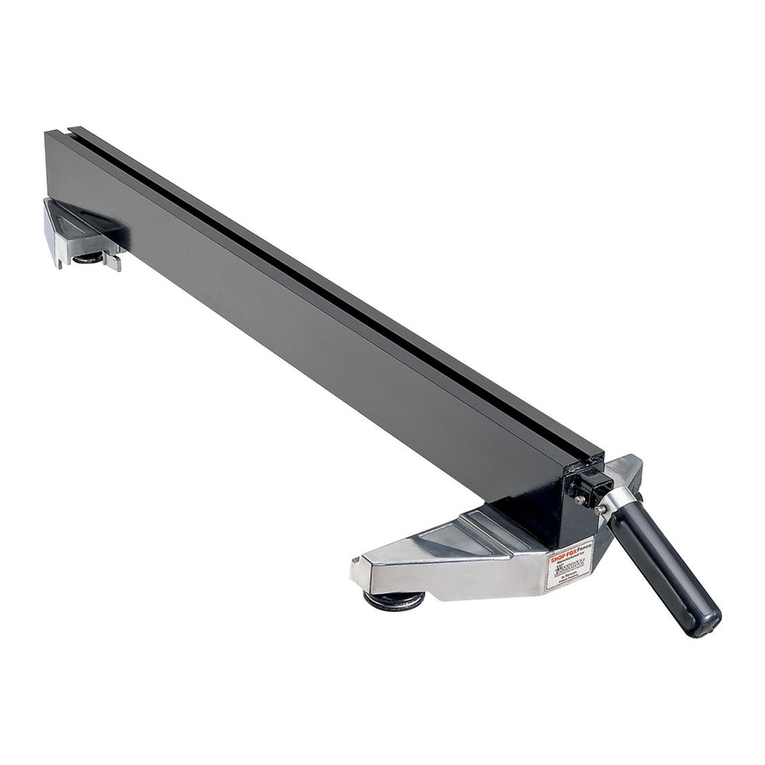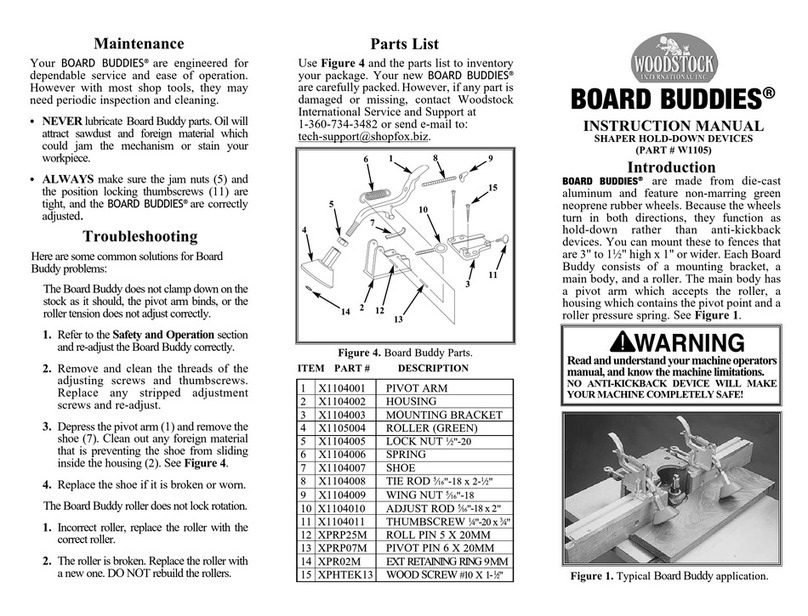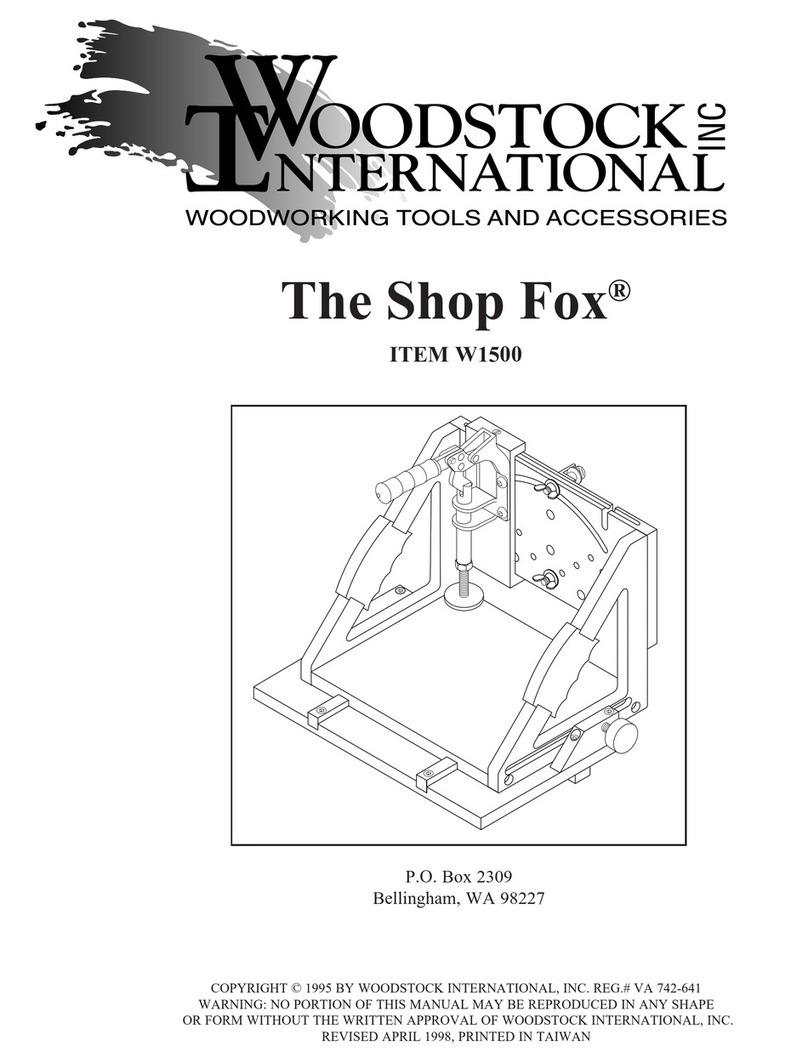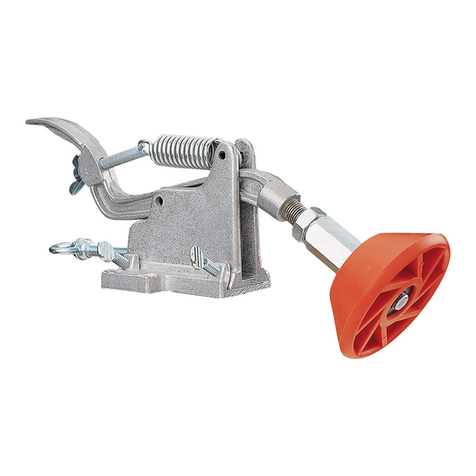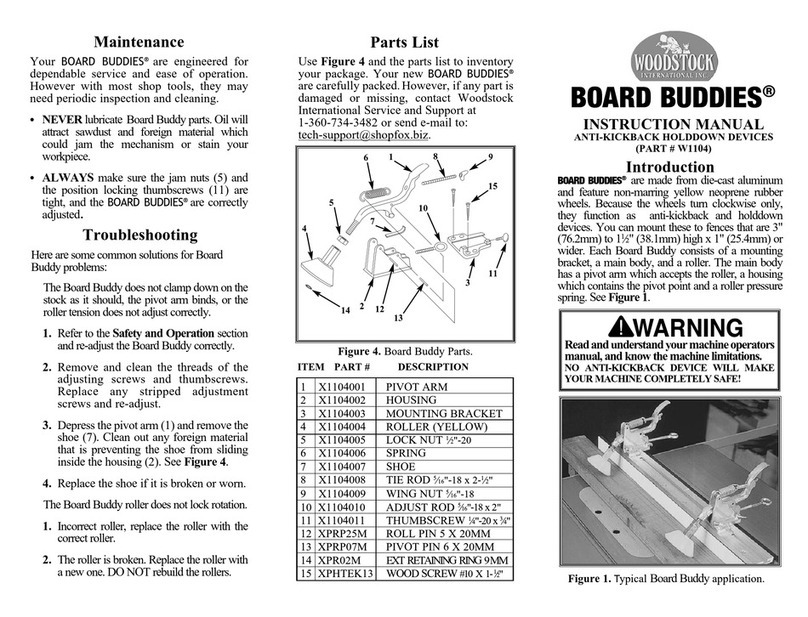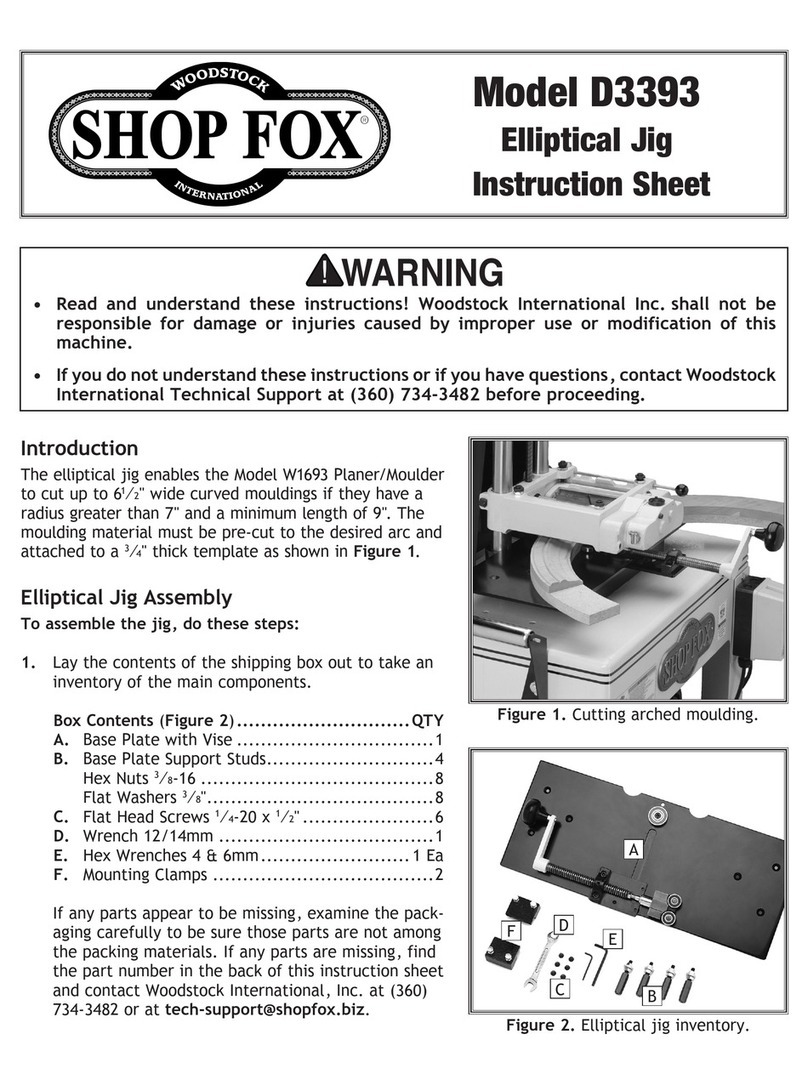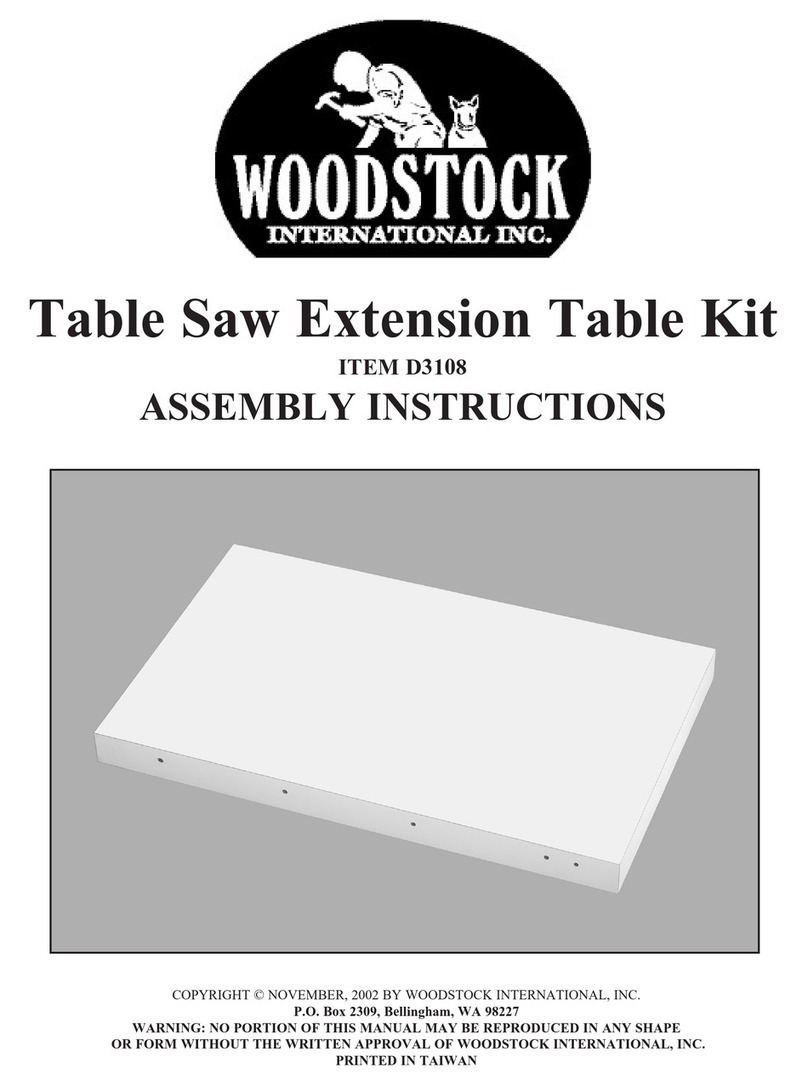Shop Fox®Fence -3-
AA..SSAAFFEETTYYRRUULLEESSFFOORRTTAABBLLEESSAAWWSS
1133..DDOONNOOTTRREEAACCHHBBEEHHIINNDDTTAABBLLEESSAAWW
TTOOGGRRAABBCCUUTTOOFFFFPPIIEECCEE..If wood binds
against saw blade it will kick back faster than
you can let go.
1144..DDOONNOOTTLLEETTTTHHEEEENNDDOOFFTTHHEEWWOORRKK--
PPIIEECCEECCOONNTTAACCTTTTHHEEFFEENNCCEEWWHHIILLEE
CCRROOSSSSCCUUTTTTIINNGGWWOOOODDWWIITTHHTTHHEE
MMIITTEERRGGAAUUGGEE..There is a potential for
kick-back. Move the fence away.
1155..DDIISSCCOONNNNEECCTTTTAABBLLEESSAAWWFFRROOMM
PPOOWWEERRbefore servicing and when changing
accessories, such as blades, bits, and cutters.
1166..AAVVOOIIDDAACCCCIIDDEENNTTAALLSSTTAARRTTIINNGG..Make
sure the switch is in the “OFF” position
before plugging in the cord.
1177..CCHHEECCKKDDAAMMAAGGEEDDPPAARRTTSS..Do not oper-
ate the table saw until you are certain it is in
perfect running condition.
1188..NNEEVVEERRLLEEAAVVEETTHHEETTAABBLLEESSAAWWRRUUNN--
NNIINNGGUUNNAATTTTEENNDDEEDD--TTUURRNNPPOOWWEERR
OOFFFF..Do not leave the saw until it comes to a
full stop.
1199..DDOONNOOTTOOPPEERRAATTEEEEQQUUIIPPMMEENNTTIIFF
UUSSIINNGGDDRRUUGGSS,,AALLCCOOHHOOLL,,OORRMMEEDD--
IICCAATTIIOONN..
2200..DDOONNOOTTWWOORRKKIINNHHAASSTTEEor operate
equipment if you are mentally or physically
fatigued.
2211..IIFFTTHHEERREEIISSSSOOMMEETTHHIINNGGYYOOUUDDOONNOOTT
KKNNOOWWOORRUUNNDDEERRSSTTAANNDD,,DDOONNOOTT
OOPPEERRAATTEEMMAACCHHIINNEE!!Ask for help first.
2222..BBAADDHHAABBIITTSSAARREEDDAANNGGEERROOUUSS..Review
all safety procedures often.
These safety rules cannot cover every situation in
a woodshop. Consider your conditions when set-
ting up and using your Shop Fox®Fence.
11..KKNNOOWWYYOOUURRTTAABBLLEESSAAWW..Read the
owner’s manual carefully. Learn the tool’s
applications and limitations, as well as its
particular hazards.
22..DDOONNOOTTRREEMMOOVVEEGGUUAARRDDSS..Maintain
guards in working order.
33..EENNSSUURREETTHHAATTYYOOUURRTTAABBLLEESSAAWWIISS
EELLEECCTTRRIICCAALLLLYYGGRROOUUNNDDEEDD..Never
remove the grounding prong.
44..KKEEEEPPWWOORRKKAARREEAACCLLEEAANN..Cluttered
areas invite accidents.
55..AAVVOOIIDDDDAANNGGEERROOUUSSEENNVVIIRROONNMMEENNTTSS..
Do not use power tools in damp or wet loca-
tions or expose them to rain. Keep your work
area well lighted.
66..MMAAKKEEWWOORRKKSSHHOOPPCCHHIILLDD--PPRROOOOFFwith
padlocks, master switches, or by removing
starter keys.
77..DDOONNOOTTFFOORRCCEEWWOORRKKTTHHRROOUUGGHH
TTAABBLLEESSAAWW..Tools work better and more
safely when they are allowed to work at their
own speed.
88..WWEEAARRPPRROOPPEERRAAPPPPAARREELL..Do not wear
loose clothing, gloves, neckties, or jewelry
that might get caught in moving parts. Non-
slip footwear should be worn. Wear a hat or
other protective head wear if your hair is
long.
99..NNEEVVEERRSSTTAANNDDOORRLLEEAANNOONNTTOOOOLL..
1100..AALLWWAAYYSSUUSSEESSAAFFEETTYYGGLLAASSSSEESS,,EEAARR
PPRROOTTEECCTTIIOONNAANNDDRREESSPPIIRRAATTOORRYYPPRROO--
TTEECCTTIIOONN.
1111..DDOONNOOTTOOVVEERRRREEAACCHH..Keep proper foot-
ing and balance at all times.
1122..UUSSEEAAPPUUSSHHSSTTIICCKKWWHHEENNCCUUTTTTIINNGG
NNAARRRROOWWPPIIEECCEESS..
